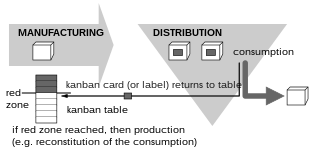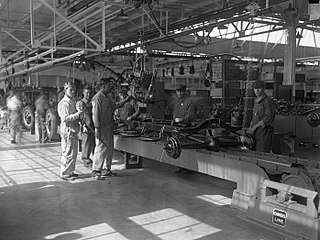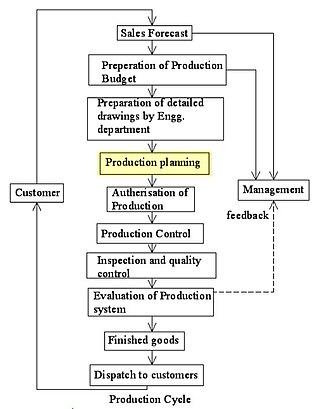This article has multiple issues. Please help improve it or discuss these issues on the talk page . (Learn how and when to remove these messages)
|
Project production management (PPM) [1] [2] is the application of operations management [2] [3] to the delivery of capital projects. The PPM framework is based on a project as a production system view, [1] [2] [3] in which a project transforms inputs (raw materials, information, labor, plant & machinery) into outputs (goods and services).
Contents
The knowledge that forms the basis of PPM originated in the discipline of industrial engineering during the Industrial Revolution. During this time, industrial engineering matured and then found application in many areas such as military planning and logistics for both the First and Second World Wars and manufacturing systems. As a coherent body of knowledge began to form, industrial engineering evolved into various scientific disciplines including operations research, operations management and queueing theory, amongst other areas of focus. Project Production Management (PPM) is the application of this body of knowledge to the delivery of capital projects.
Project management, as defined by the Project Management Institute, [1] [2] specifically excludes operations management from its body of knowledge, [3] on the basis that projects are temporary endeavors with a beginning and an end, whereas operations refer to activities that are either ongoing or repetitive. However, by looking at a large capital project as a production system, such as what is encountered in construction, [4] it is possible to apply the theory and associated technical frameworks from operations research, industrial engineering and queuing theory to optimize, plan, control and improve project performance.
For example, Project Production Management applies tools and techniques typically used in manufacturing management, such as described by Philip M. Morse in, [1] or in Factory Physics [2] [5] to assess the impact of variability and inventory on project performance. Although any variability in a production system degrades its performance, by understanding which variability is detrimental to the business and which is beneficial, steps can be implemented to reduce detrimental variability. After mitigation steps are put in place, the impact of any residual variability can be addressed by allocating buffers at select points in the project production system – a combination of capacity, inventory and time.
Scientific and Engineering disciplines have contributed to many mathematical methods for the design and planning in project planning and scheduling, most notably linear and dynamic programming yielding techniques such as the critical path method (CPM) and the program evaluation and review technique (PERT). The application of engineering disciplines, particularly the areas of operations research, industrial engineering and queueing theory have found much application in the fields of manufacturing and factory production systems. Factory Physics is an example of where these scientific principles are described as forming a framework for manufacturing and production management. Just as Factory Physics is the application of scientific principles to construct a framework for manufacturing and production management, Project Production Management is the application of the very same operations principles to the activities in a project, covering an area that has been conventionally out of scope for project management. [3]




